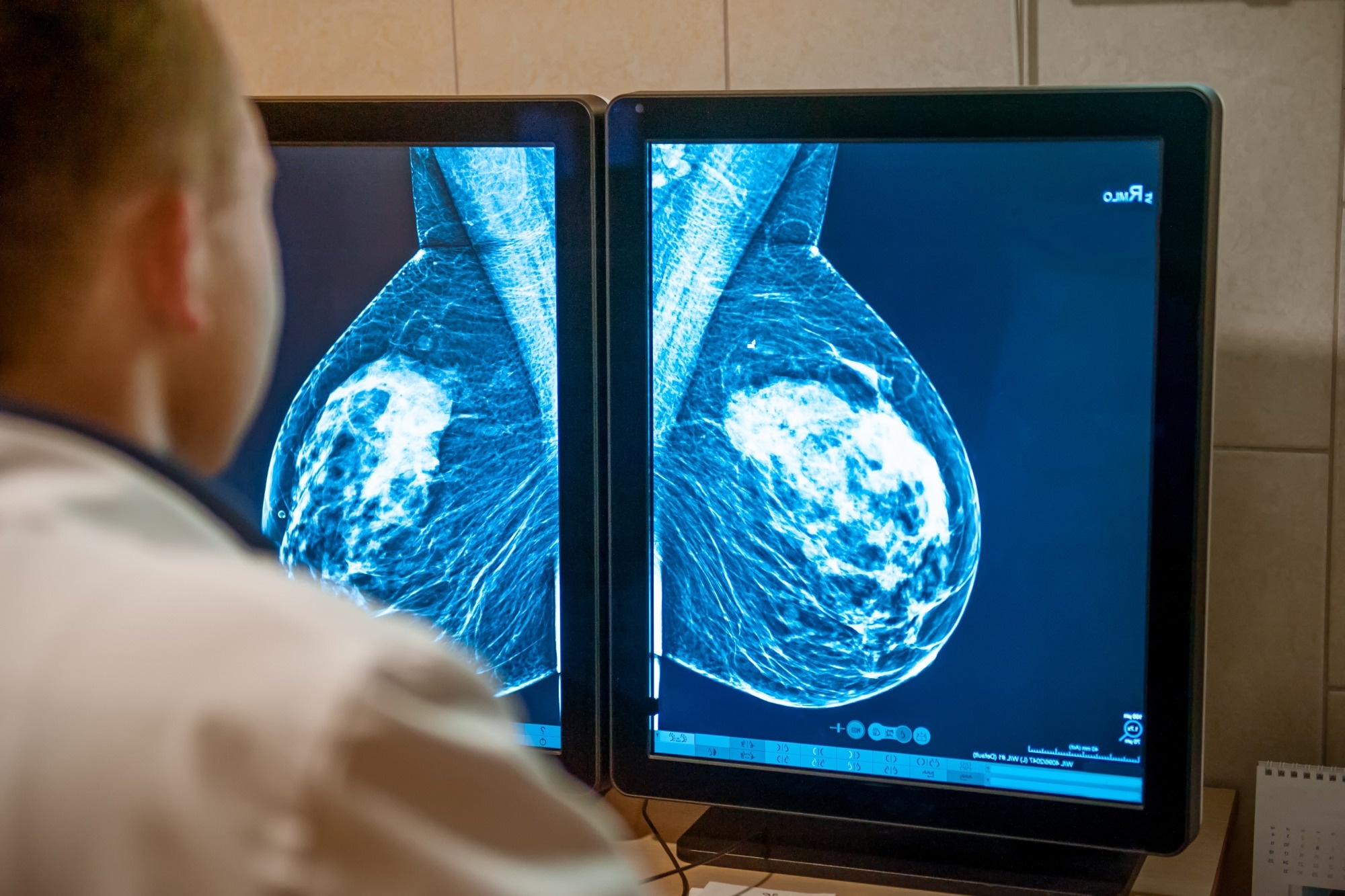
Image Credit: Okrasiuk/Shutterstock.com
Tested in a clinical study with 39 patients, PACT matched the diagnostic accuracy of mammography and MRI, without exposing patients to radiation or causing physical discomfort. By analyzing hemoglobin patterns using machine learning, the system pinpoints tumors early, offering a safer and more patient-friendly alternative to existing screening methods.
Conventional breast cancer screening tools each come with limitations. X-ray mammography uses radiation and often causes discomfort. Ultrasound results can vary by operator skill, while MRI offers high resolution but is expensive and less accessible. For over 20 years, Caltech’s Lihong Wang has been working to address these issues with PACT—a non-invasive method that uses near-infrared lasers and ultrasonic sensors to map breast tissue with high precision.
Instead of imaging tissue directly, PACT captures functional changes by detecting oxygenated hemoglobin, typically elevated in areas of tumor activity. This approach allows the system to visualize features as small as 0.25 millimeters, up to 4 centimeters beneath the surface.
In trials conducted with City of Hope, PACT accurately distinguished between benign and malignant tissue, performing on par with traditional screening tools. Its ability to highlight subtle cancer patterns—especially in dense breast tissue—offers an important advantage over conventional imaging, where false positives are common.
How PACT Works
At the core of PACT is its hybrid “light-and-sound” imaging method. Pulses of near-infrared laser light travel through the breast, where hemoglobin molecules absorb the energy and emit ultrasonic signals. These signals are then captured by 512 sensors to generate detailed images of blood vessel activity—key markers of tumor growth, known as angiogenesis.
Unlike X-rays, which only provide structural data, PACT delivers both anatomical and functional information. Two laser wavelengths differentiate between oxygenated and deoxygenated hemoglobin, revealing areas of tumor hypoxia, a common feature in aggressive cancers. The experience for patients is also significantly improved. Instead of compression plates, scans are done with the breast submerged in warm water, with each scan lasting just 15 seconds during a breath-hold.
The technology shows particular promise for screening dense breast tissue, where X-rays can struggle, resulting in up to 15 % false positives. Future versions of PACT aim to expand its capabilities further by imaging lipid content and collagen, adding new layers of specificity.
The Role of AI and What’s Next
Machine learning plays a key role in taking PACT from an imaging tool to a diagnostic system. Caltech researchers have trained neural networks on thousands of breast tumor images, teaching the algorithm to recognize cancer-related microvascular patterns. These include subtle signs like uneven blood vessel growth and oxygen deprivation, often too faint for human eyes to detect.
The team is now focused on three major improvements: expanding the training database to include a wider range of cancer subtypes, creating real-time image classification tools, and integrating complementary data sources, such as thermal imaging. They're also working on making the system more compact; currently, it resembles the size of an MRI bed. FDA clearance trials are planned for 2026, with commercialization on the horizon.
Dr. Wang envisions PACT as a first-line screening tool, particularly for high-risk patients who require frequent monitoring. Because it’s radiation-free, it can be used regularly without cumulative risk—something not possible with current screening techniques. Beyond breast cancer, the team is also exploring applications for melanoma depth measurement and thyroid nodule evaluation, underscoring PACT’s broader potential in medical imaging.
Final Thoughts
PACT offers a compelling step forward in breast cancer detection by blending advanced optics, ultrasound, and AI into a single, patient-friendly tool. It meets the diagnostic performance of established methods while eliminating the key drawbacks of radiation exposure and discomfort.
As research continues and clinical adoption grows, PACT could play a vital role in improving early detection, especially for patients with dense breast tissue or those needing regular scans.
Disclaimer: The views expressed here are those of the author expressed in their private capacity and do not necessarily represent the views of AZoM.com Limited T/A AZoNetwork the owner and operator of this website. This disclaimer forms part of the Terms and conditions of use of this website.